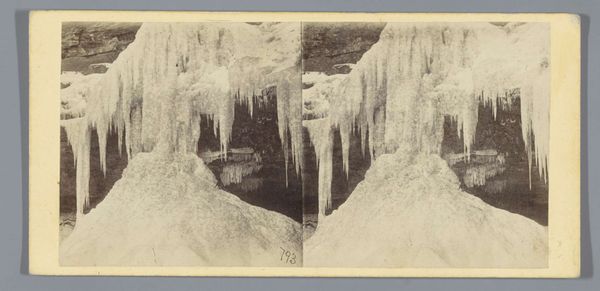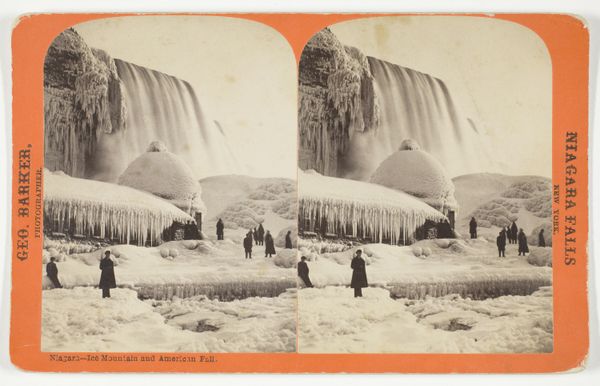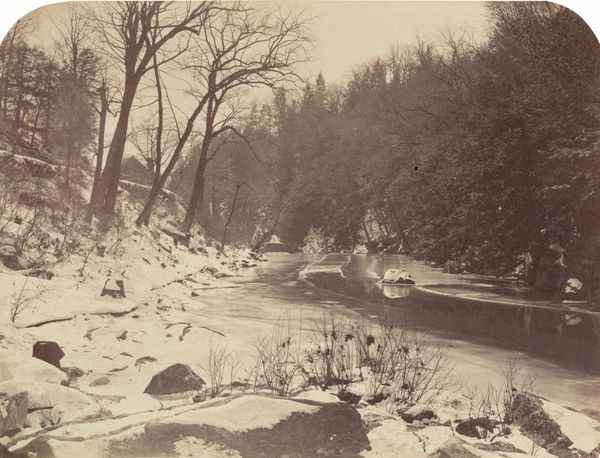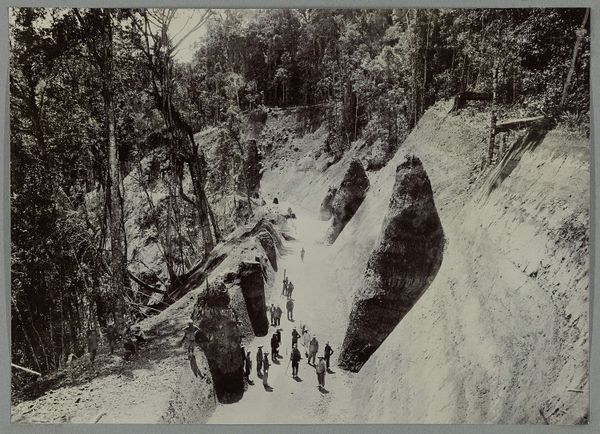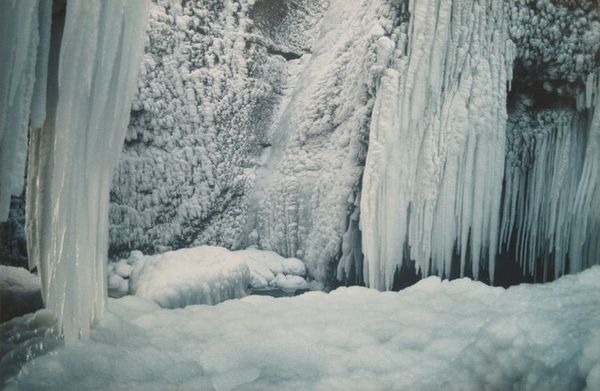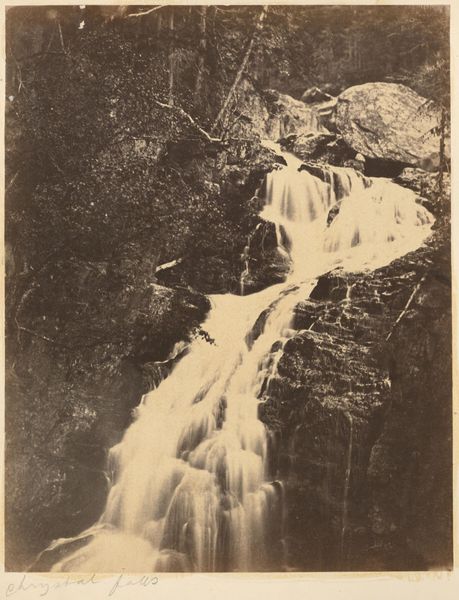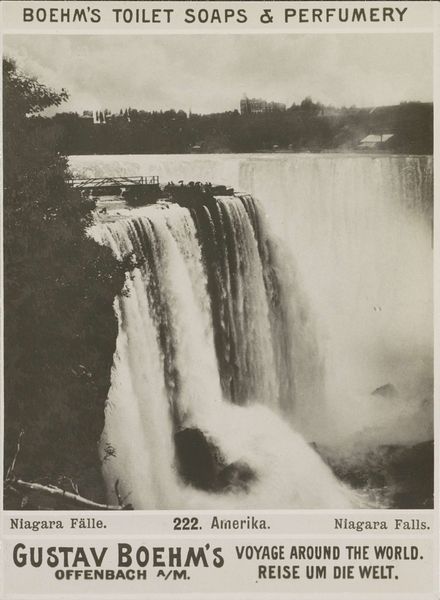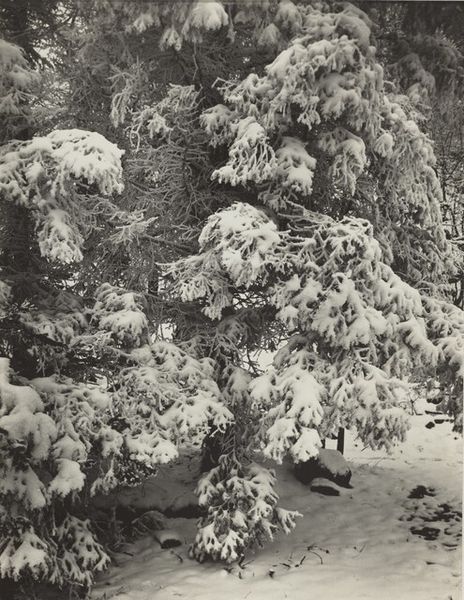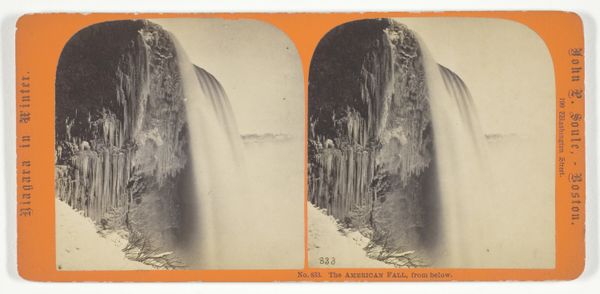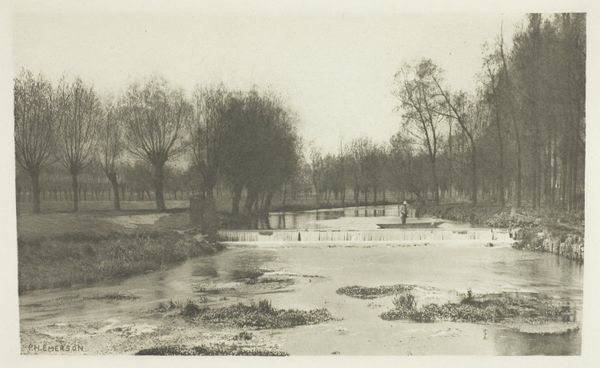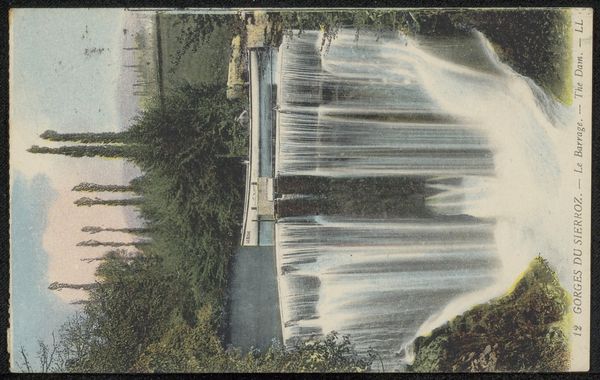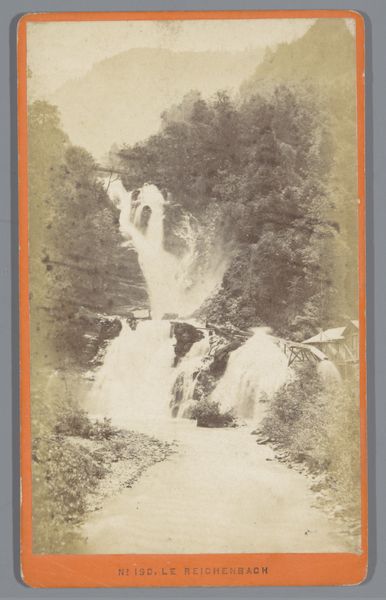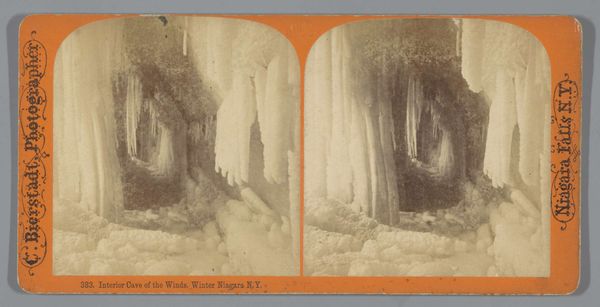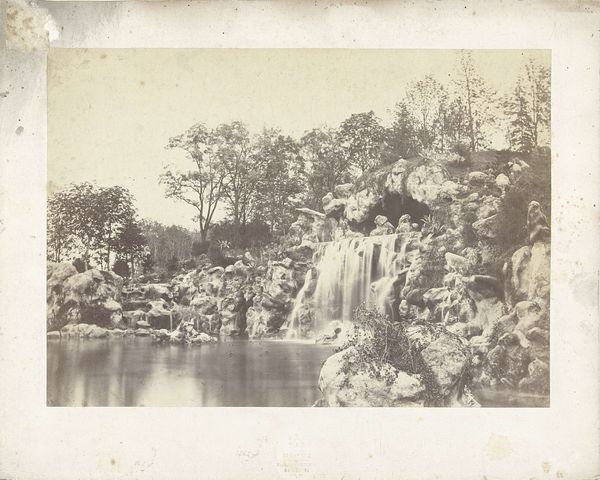
photogravure, photography, gelatin-silver-print
#
photogravure
#
pictorialism
#
landscape
#
nature
#
photography
#
gelatin-silver-print
#
united-states
#
watercolor
Dimensions: 5 7/8 x 8 7/8 in. (14.92 x 22.54 cm) (image)9 15/16 x 13 1/4 in. (25.24 x 33.66 cm) (sheet)
Copyright: Public Domain
Curator: What strikes me immediately about this photogravure, "Minnehaha Falls" by Harrison L. Ide, completed around 1895, is its haunting stillness. It's as though the water itself has been captured, frozen in time. Editor: Yes, the composition certainly draws you into a space of suspended animation. Considering its context, it evokes the Romantic-era anxieties about industrial progress and the yearning to capture the sublime and, often feminized, natural landscape. Think of the dispossession of Indigenous communities surrounding these 'natural wonders'. Do you think Ide's intentions were to participate in or reject these anxieties? Curator: Intention is always tricky to pin down. The tonality is quite striking; a stark interplay between light and shadow. Look how Ide has rendered the ice—it almost feels sculptural. Its textures transform liquid into seemingly permanent solid form. There’s a remarkable technical skill evident here in manipulating the gelatin-silver print process, wouldn't you agree? Editor: The technology becomes another colonizing force, does it not? Consider, for a moment, how photography in the late 19th century became inextricably linked with the concept of control—not just of nature, as you say, but also of representation itself. White settlers used images of an empty, pristine wilderness as evidence of their rights to the land. Curator: While I understand that perspective, isn't it possible also to appreciate the way that he renders the delicate play of light and the unique material qualities? If we move away from the thematic elements to consider it as line and mass, then what is created transcends context; it is merely forms interacting to form image. Editor: I think to ignore historical context is itself a political act. If we isolate the image, we risk replicating some of the exploitative behaviors of its historical context. In this picture of what settlers considered 'virgin land' how can it fail to remind us about that original context: the landscape before exploitation and destruction by capitalist settlers? This landscape has histories written into the waters—literally dammed to promote private industry and the enclosure of formerly public spaces for settler consumption. The falls may look frozen, but this history should remain fluid. Curator: Well, I certainly see how this piece raises essential and challenging questions about historical memory and its entanglements within images and artistic media. Thank you. Editor: Yes, examining our complicity as viewers in these constructed landscapes helps us be accountable, even now, for a better, more just understanding of the image.
Comments
No comments
Be the first to comment and join the conversation on the ultimate creative platform.
